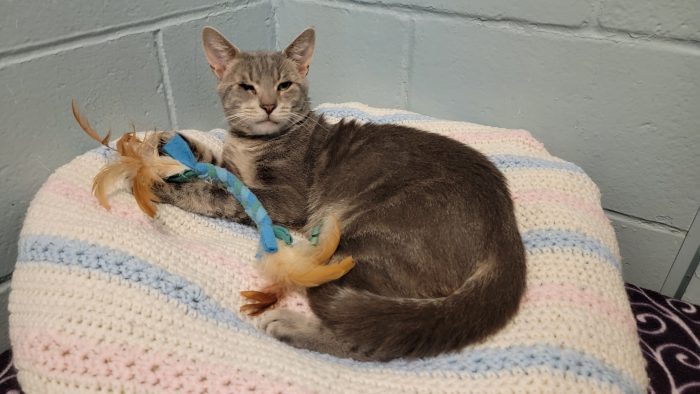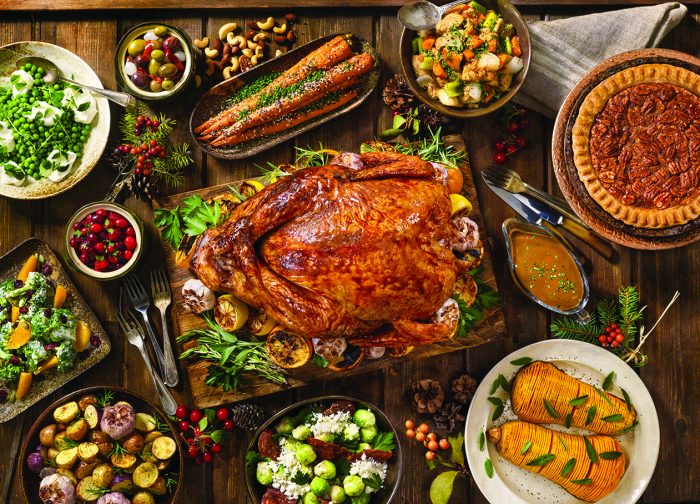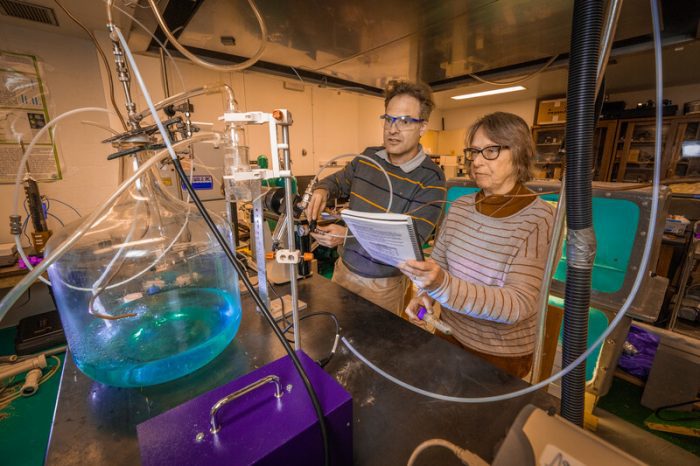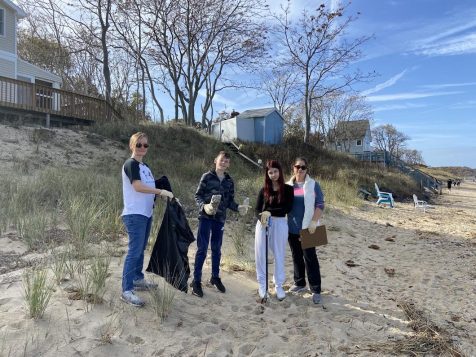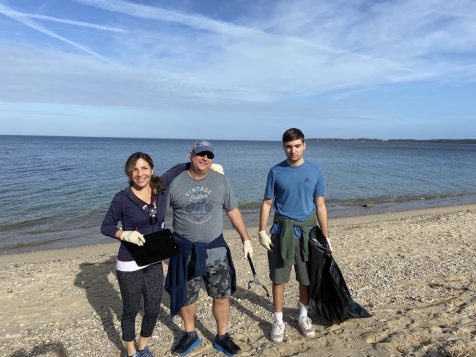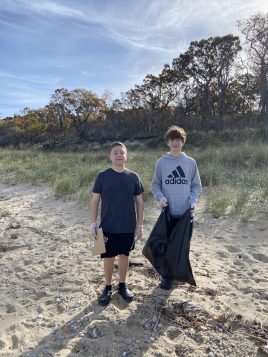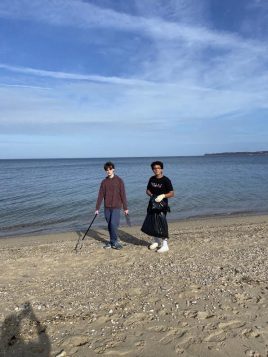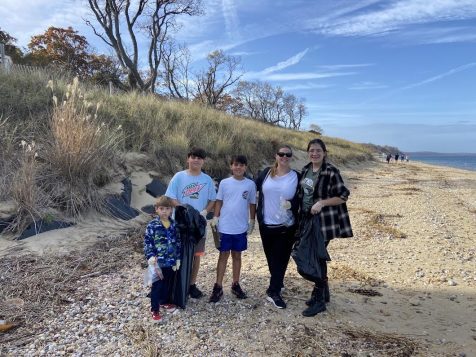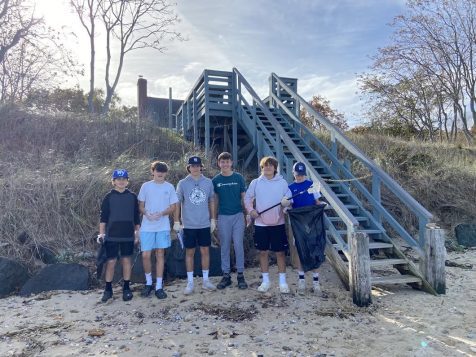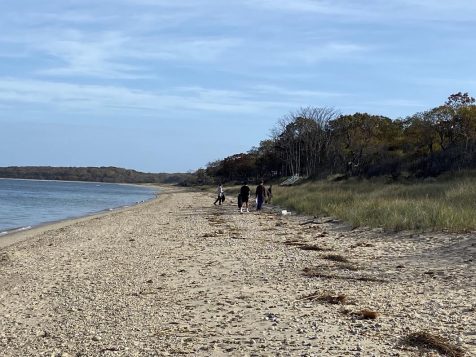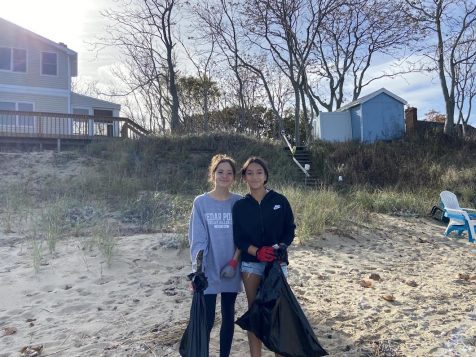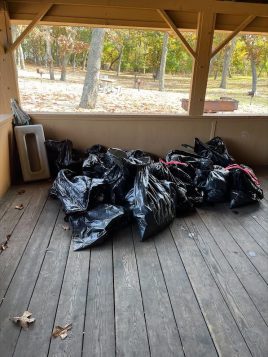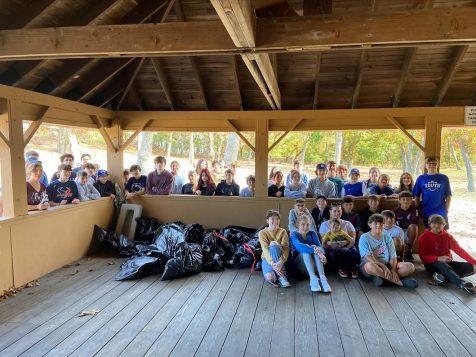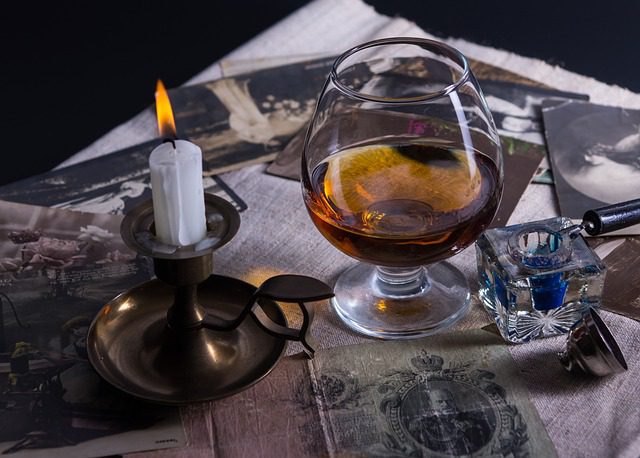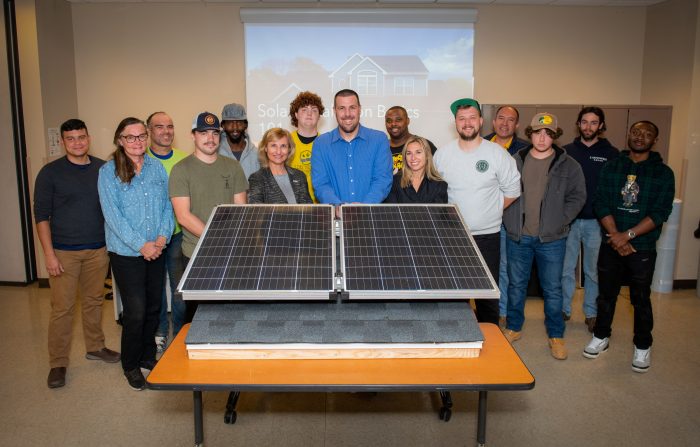By Daniel Dunaief
The ocean often serves as an enormous reflecting pool, showing a virtual image of migrating and water birds soaring on the wind, planes carrying people across continents, and clouds in multiple layers sporting various shades of white to grey.
Those clouds have more in common with the ocean below than just their reflection. In fact, some of the ice nucleating particles that help form the clouds come directly from the phytoplankton in the water below.
Daniel Knopf, Professor of Atmospheric Chemistry at Stony Brook University, and Josephine Aller, microbial oceanographer in the School of Marine and Atmospheric Sciences at Stony Brook University, have been teaming up to study the effect of sea spray aerosols on cloud formation in the ocean for 15 years.
Recently, the duo published a paper in the journal Science Advances, in which they simulated sea spray aerosols in laboratory tanks to reflect ocean conditions. They found that organic compounds released by marine microorganisms become ice nucleating particles.
“We performed ice formation experiments in our lab using particles generated from our tanks to determine under which conditions (of temperature and relative humidity) they form ice,” Knopf explained in an email.
During specific temperature and relative humidity conditions, these sea spray aerosols, which are released when bubbles at the surface containing the materials burst or when wind carries them from the ocean into the air, initiate ice crystal formation.
Previous studies revealed that the water contains organic material from biological activity, but the researchers could not identify the specific type of nuclei.
“The current study closes this gap and identifies polysaccharides and proteinaceous matter” as the ice nucleating particles, Knopf explained.
Through work in the lab, Knopf and Aller showed that the particles produce ice crystals through two different pathways under typical atmospheric conditions. Ice can form either by water vapor onto the aerosolized particles or from liquid aerosol droplets.
From x-rays to climate models
Aller and Knopf explored the composition of individual particles using x-ray microscopy technology at the synchrotron light source at the Lawrence Berkeley National Laboratory in California.
After digitally marking particles, the researchers transferred the particles to the x-ray microscope to determine their shape and composition.
“This allowed us to unambiguously examine the ice nucleating SSA particles and compare their organic signature with reference spectra of organic/ biogenic matter,” Knopf wrote.
Aller added that the research provides a clear picture of the conditions necessary for freezing.
“This study not only identifies the ice nucleating agent, but also provides the first holistic parameterization to predict freezing from SSA particles,” she said in a statement. “This new parameterization includes immersion freezing, as the INP is engulfed in a liquid, usually water, and the deposition ice nucleation where ice forms on the INP without any visual water.”
The parameterization can be applied in cloud-resolving and climate models to determine the climatic impact of ice crystal containing clouds, Aller added.
This type of modeling can help with climate models of the polar regions, which is heating at a rate faster than other parts of the world.
At this point, Knopf said the Stony Brook researchers have collaborated with scientists at NASA GISS who work on climate models to improve the understanding of mixed-phase clouds.
“We will make use of the newly developed ice formation parameterization in cloud-resolving models and compare the results to observations,” Knopf wrote. “Those results, ultimately, will be useful to improve climate models.”
Competition in the clouds
As for any surprises, Knopf added that it is “astonishing how biological activity in surface waters can be related to cloud formation in the atmosphere.” Additionally, he was amazed that the organic matter that nucleated the ice was similar independent of the water source.
Spectroscopically, the ice showed the same features, which allowed the researchers to combine the various data sets.
This means that different parts of the ocean do not need local freezing parameterization, which makes modeling the impact of oceans on cloud formation easier.
While sea spray aerosols can and do act as ice nucleating particles, the Stony Brook scientists added that other airborne particles also contribute to the formation of clouds. A heterogeneous mix of particles creates a competition among them for activation. Dust and certain fly ash serve as more efficient ice nucleating particles compared to sea spray aerosols.
During periods when sufficient water vapor is in the area, the sea spray aerosols can also be activated. When these organic particles do not become a part of clouds, they form supercooled droplets or float around as interstitial aerosols and get transported to other areas, Knopf explained.
As for the impact of global warming, Knopf suggested that such increases may first change the microorganisms’ activity and breakdown of chemical species in the ocean surface waters. “How this impacts the source of sea spray aerosols and ice nucleating particles, we do not know that yet,” he said.
The particular species of planktonic communities may change, as differences in nutrient levels could select for cyanobacteria over the normal mix of algal groups. That could cause a change in the exudates produced.
Locally, Knopf and Aller are working with Chris Gobler, Professor in the School of Marine and Atmospheric Sciences at Stony Brook, in Lake Agawam in Southampton, which is prone to harmful algal blooms. The Stony Brook scientists are working to understand if the toxins produced by these algae are becoming airborne in sufficient mass.
“It may imply a health-related issue when aerosolized and one is close to the source,” Knopf explained. “There won’t be toxic clouds due to dilution and aerosol mass constraints.”
Knopf and Aller hope to continue to develop these models by combining their lab work with field data.
“This is an ongoing process,” Knopf said. “The more data we acquire, the more accurate the parameterization should become.”


